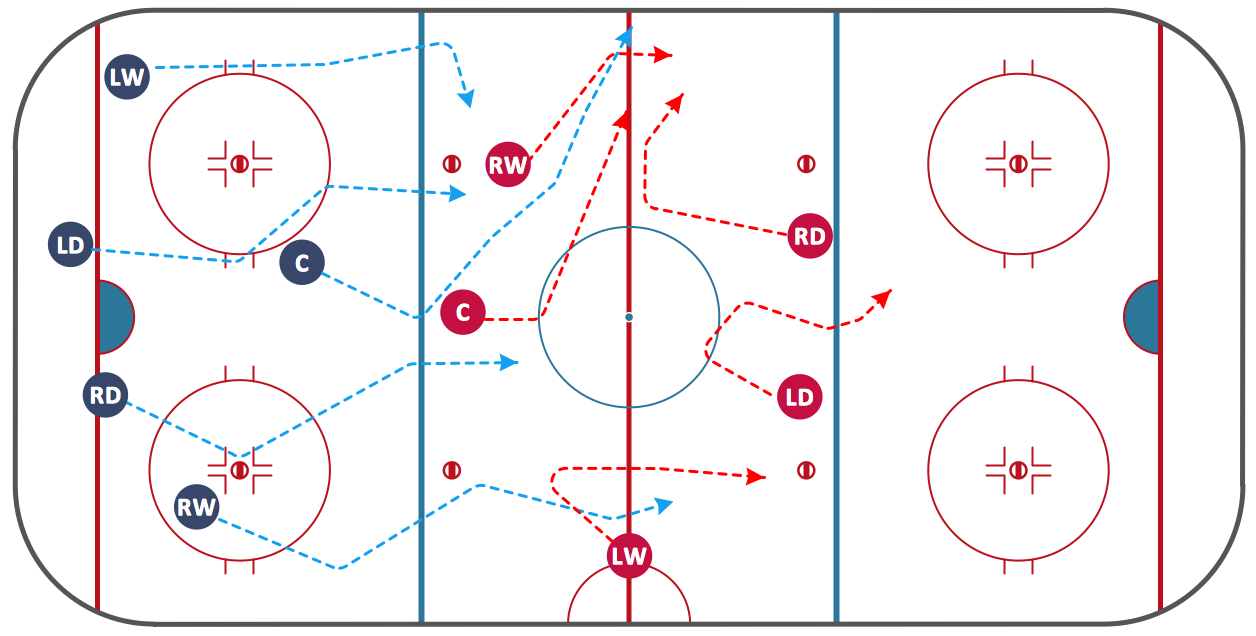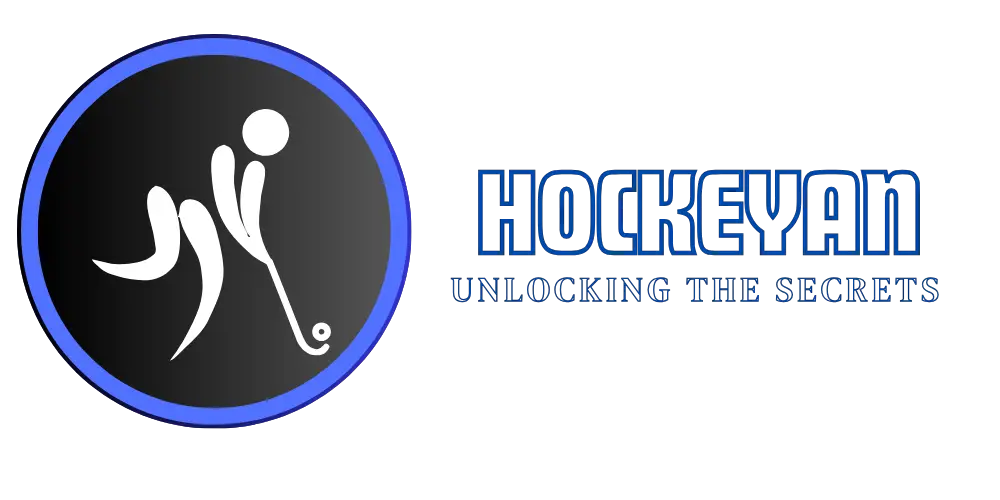Playing defense in hockey requires skill, strategy, and quick thinking. It’s a crucial part of the game that can make or break a team’s performance.
In this blog post, we will explore the essential aspects of playing defense in hockey. From positioning and communication to understanding offensive tactics, mastering these elements can elevate your game. Whether you’re a beginner or a seasoned player, honing your defensive skills is key to becoming a reliable team member.
Defense isn’t just about stopping the puck; it involves anticipating the opponent’s moves and supporting your teammates. Let’s dive into the strategies and techniques that will help you play defense effectively and contribute to your team’s success on the ice.

Credit: www.conceptdraw.com
Mastering Defensive Positioning
Playing defense in hockey requires a keen understanding of positioning. Effective defensive positioning can make or break a game. By mastering this skill, you can thwart opponents and protect your goal.
Stance And Balance
Your stance is crucial in defense. Keep your knees slightly bent. Stay low with your body weight centered. This gives you stability and readiness to move quickly.
Feet should be shoulder-width apart. This balance helps you react swiftly. It also reduces the risk of falling or being knocked over.
Reading The Opponent
Watch the opponent’s body language. Look for clues on their next move. Pay attention to their eyes and stick positioning.
Anticipate their actions by analyzing their patterns. Knowing their tendencies helps you stay one step ahead. This makes it easier to intercept passes and block shots.
Maintain a safe distance. This allows you to react if they change direction. Stay close enough to challenge them but far enough to avoid being easily beaten.
Stick Handling Techniques
Good stick handling is crucial for playing strong defense in hockey. It helps you control the puck, make accurate passes, and block your opponents. Here are two key techniques: poke checks and stick lifts.
Poke Checks
Poke checks are a vital defense move. They allow you to knock the puck away from an opponent. To execute a poke check, extend your stick and tap the puck with the blade. Timing is essential. Wait for the right moment when the puck is within reach.
| Steps | Description |
|---|---|
| 1. Position | Stay low and keep your stick ready. |
| 2. Watch | Keep your eyes on the puck and the opponent’s stick. |
| 3. Extend | Extend your stick quickly and tap the puck. |
| 4. Recover | Pull back your stick and prepare for the next move. |
Practice poke checks during drills. This will improve your timing and accuracy. Remember to stay balanced and ready to move.
Stick Lifts
Stick lifts are another effective technique. They help you take the puck from an opponent. To perform a stick lift, use your stick to lift your opponent’s stick off the ice. This move requires strength and precision.
- Approach: Skate close to your opponent.
- Position: Get your stick under your opponent’s stick.
- Lift: Use your stick to lift your opponent’s stick upward.
- Control: Take control of the puck and make your move.
Practice stick lifts during practice sessions. Focus on timing and power. Avoid lifting too high, which can result in penalties.
Mastering these stick handling techniques will enhance your defensive skills. Regular practice is key. Stay focused and keep improving your game.
Effective Body Positioning
Effective body positioning is crucial in playing defense hockey. It helps you control the game and limit scoring chances. Proper positioning allows you to anticipate moves and make smart decisions. Without it, you can easily be outmaneuvered. Let’s dive into some key techniques.
Body Checks
Body checks are vital for defense. They help you regain puck control. To execute a body check, keep your knees bent. This provides stability. Then, use your shoulder to make contact. Aim for the opponent’s chest or shoulder. Ensure you are on balance to avoid penalties.
Angling And Gap Control
Angling forces opponents to the boards. This limits their movement. Position yourself between the puck and the net. Maintain a slight bend in your knees. This keeps you agile. Control the gap by staying close to the opponent. Too much space allows them to pass or shoot.
Close the gap by moving your feet quickly. Match their speed. This prevents them from gaining an advantage. Use your stick to poke the puck away. Always keep your eyes on the opponent’s chest. This helps you read their next move.

Credit: howtohockey.com
Communication On The Ice
Effective communication is vital for a successful defence in hockey. Players need to understand their roles and coordinate with each other. Good communication can prevent goals and create opportunities.
Verbal Cues
Verbal cues are essential for quick decisions. Use clear and short phrases. Here are some common verbal cues:
- “Man on”: Alerts a teammate that an opponent is close.
- “I got it”: Indicates taking control of the puck.
- “Left” or “Right”: Directs a teammate where to pass or move.
- “Switch”: Signals to change defensive positions.
Consistency in using these cues builds trust and understanding among players.
Non-verbal Signals
Non-verbal signals are equally crucial. They complement verbal cues and help in noisy environments. Use gestures and body language to communicate silently.
Here are some effective non-verbal signals:
- Pointing: Directs a teammate to a specific location or player.
- Stick Taps: Indicates readiness to receive a pass.
- Head Nods: Confirms understanding of a plan or strategy.
- Eye Contact: Ensures coordination and timing, especially during passes.
Combine verbal cues with non-verbal signals for better communication. This dual approach helps in maintaining strong defence. Adapt these techniques to your team’s style and preferences.
Developing Defensive Awareness
Developing defensive awareness is crucial in hockey. It helps players anticipate opponents’ moves, support teammates, and maintain solid defensive positioning. With good awareness, a player can disrupt the opposing team’s flow and create opportunities for counter-attacks.
Anticipating Plays
Anticipating plays involves reading the game. Watch the puck, but also watch opponents. Notice their body language and stick position. This helps predict their next move. Understand common offensive strategies. Recognize patterns and tendencies in opponents’ play. Stay alert and think one step ahead. This proactive approach improves defensive effectiveness.
Supporting Teammates
Supporting teammates is key in defense. Communicate constantly. Use clear, simple words. Position yourself to back up your teammates. Fill in gaps and cover for them. Stay aware of their positions. Provide options for a pass out of defense. This teamwork strengthens the overall defense and makes it harder for opponents to find weaknesses.

Credit: www.youtube.com
Frequently Asked Questions
What Is Defensive Hockey?
Defensive hockey focuses on preventing the opposing team from scoring. It involves strategies and positioning.
How Do You Play Defense In Hockey?
Stay between the puck and your goal. Block shots and passes. Use body checks wisely.
What Are Key Defensive Skills In Hockey?
Positioning, stick checking, body checking, and shot blocking are vital defensive skills in hockey.
How Can I Improve My Defensive Hockey Skills?
Practice positioning, stick handling, and body checking regularly. Watch professional games for tips.
Why Is Positioning Important In Defensive Hockey?
Positioning helps you stay between the puck and your goal. It prevents the opposition from scoring easily.
What Is Stick Checking In Hockey?
Stick checking involves using your stick to disrupt the opponent’s puck control or pass. It’s a key defensive move.
How Does Body Checking Help In Defense?
Body checking separates the opponent from the puck. It can stop their attack and regain possession.
What Role Do Defensemen Play In Hockey?
Defensemen protect the goal. They block shots, clear the puck, and support the goalie.
How Do You Block Shots In Hockey?
Use your body or stick to intercept the puck’s path. Stay low and square to the shooter.
Conclusion
Defense hockey requires practice, focus, and teamwork. Stay alert on the ice. Communicate with teammates. Position yourself strategically. Anticipate opponents’ moves. Strengthen your skating and stickhandling skills. Remember, patience and persistence pay off. Keep practicing and you will improve. Enjoy the game and play fair.




